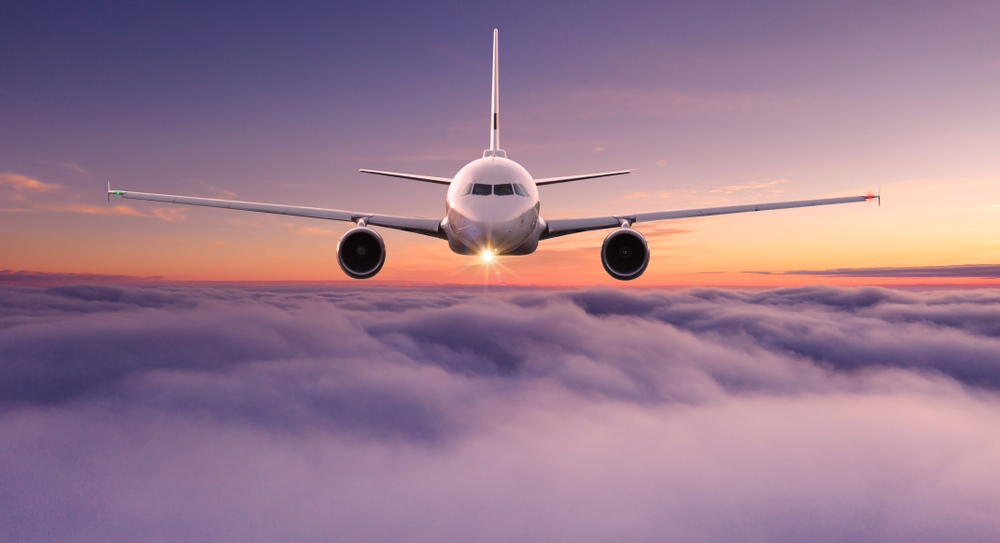Altering the altitude of less than 2 per cent of flights may reduce aircraft-linked climate change by 59 per cent, according to a study.
Aircraft contrails -- the white streaks aircraft leave in the sky -- could be as bad for the climate as their carbon dioxide (CO2) emissions, the researchers said.
The team led by scientists at Imperial College London in the UK found that flight altitude changes of just 2000 feet could lessen their effect.
This combined with using cleaner aircraft engines, could reduce contrail-caused harm to the climate by up to 90 per cent, according to the study published in the journal Environmental Science & Technology.
“Changing the altitude of a small number of flights could significantly reduce the climate effects of aviation contrails,” said Marc Stettler from Imperial College London.
“This new method could very quickly reduce the overall climate impact of the aviation industry,” Stettler said.
When hot exhaust gases from aircraft meet the cold, low-pressure air of the atmosphere, they produce white streaks in the sky called 'condensation trails', or contrails.
The contrail fumes include black carbon particles, which provide surfaces on which moisture condenses to form ice particles.
Most contrails last only a few minutes, but some spread and mix with other contrails and cirrus clouds, forming 'contrail cirrus' that linger for up to eighteen hours, the researchers said.
Previous research suggests that contrails and the clouds they help form have as much of a warming impact on the climate as aviation's cumulative carbon dioxide (CO2) emissions, because of an effect known as 'radiative forcing'.
This is where the balance is disrupted between radiation coming to the Earth from the Sun and heat emitted from the surface of our planet going out to space, forcing a change in the climate, according to the researchers.
The key difference between CO2 and contrails, however, is that while the gas will have an impact in the atmosphere for hundreds of years, the impact of contrails is short-lived, and could therefore quickly be reduced, they said.
The researchers have used computer simulations to predict how changing aircraft altitudes might reduce the number of contrails and how long they linger, which would reduce their warming impact.
This is because contrails only form and persist in thin layers of the atmosphere that have very high humidity, the researchers explained.
Because these layers are thin, small changes to flight altitudes would mean that aircraft could avoid these regions, leading to fewer contrails forming, they said.
Using data from Japan's airspace, the team found that just two per cent of flights were responsible for 80 per cent of radiation forcing within the airspace.
“A really small proportion of flights are responsible for the vast majority of contrail climate impact, meaning we can focus our attention on them,” Stettler said.
Taking into account the congestion in the airspace above Japan, the team simulated these planes to fly either 2000 feet higher or lower than their actual flight paths.
The researchers found that the contrail climate forcing could be cut by 59 per cent by altering the altitudes of 1.7 per cent of flights.
The diversion in flight paths caused less than a tenth of a per cent increase in fuel consumption.
However, the researchers said the reduced contrail formation more than offset the CO2 released by the extra fuel.
Stettler suggests that their method of targeting only the few flights that cause the most climate forcing is the best way to avoid hikes in CO2 emissions.
“We're conscious that any additional CO2 released into the atmosphere will have a climate impact stretching centuries into the future,” he said.
“So we have also calculated that if we only target flights that wouldn't emit extra CO2, we can still achieve a 20 per cent reduction in contrail forcing,” Stettler added.
The researchers said aircraft engines themselves also play a part in how harmful contrails are.
Black carbon particles are produced by incomplete fuel combustion, so new, more efficient engine combustion technology could help to reduce them by around 70 per cent, they said.
This, combined with small altitude changes, could help reduce overall contrail harm by around 90 per cent, according to the researchers.










